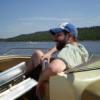The Economist has an article about the concept of human computation. They refer to it at "Citizen Science."
Spreading the load
Dec 6th 2007
From The Economist print edition
Computing: A new wave of science projects on the web is harnessing volunteers' computers in novel ways—and their brains, too
WAY back in 1999, a badge of geek pride was to run a new screensaver program called SETI@home. This used spare processing capacity on ordinary PCs to sift through radio-telescope data for signs of extraterrestrial intelligence. The bad news is that so far, not a peep has been heard from any little green men. The good news is that SETI@home is still going strong, with over 3m contributors, and is being joined by a rapidly growing legion of other volunteer computing projects supporting worthy scientific causes.
The choice is bewildering. Your PC can help design drugs against AIDS, model the future climate of the planet, search for new prime numbers or simulate micro-devices for handling satellite propellant, to cite just a few examples. Part of the boom in volunteer computing is due to an open-source platform for running such projects, called BOINC (Berkeley Open Infrastructure for Network Computing), launched in 2002 by David Anderson, the director of SETI@home. Today over 40 BOINC projects are in operation, with 15 in the life sciences alone. IBM, which runs a philanthropic initiative called World Community Grid and has signed up over 800,000 volunteer computers, is switching all the humanitarian projects that it supports to run on BOINC. These include Help Conquer Cancer, Discovering Dengue Drugs and AfricanClimate@home, which the computer giant runs on behalf of university research groups that need lots of computer power for their research.
But numbers are not all that matters. BOINC also makes it easier for anyone with a research idea to gain access to distributed-computing power. Two years ago, at the age of 18, Rytis Slatkevicius launched a project called PrimeGrid, which has since assembled possibly the largest database of prime numbers in the world, and has broken several records: last August, for example, it found the biggest known example of a special kind of prime number called a Woodall prime. In his native Lithuania, Mr Slatkevicius is a soft-spoken business student by day, but in the evenings he manages servers for his project, eking out enough to cover his costs from Google Ads, sales of mugs and T-shirts, and donations from supporters.
Another development that is boosting volunteer computing is the use of devices other than PCs, in particular games consoles and the powerful processors they contain (see article). This has been demonstrated most spectacularly by a project called Folding@home, run by Vijay Pande and his team at Stanford University, which simulates protein folding and mis-folding—a cause of diseases such as Alzheimer's. In September the combined computing capacity of the project passed one petaflop—a quadrillion mathematical operations per second—something supercomputer designers have dreamed of for several years. With just over 40,000 PlayStation 3 volunteers, Folding@home entered the record books as the most powerful distributed-computing network on Earth.
Along with a rapid increase in the number and diversity of research projects to which they contribute, there has been a marked improvement in the software that binds the volunteers together into groups. They can share information and opinions about the science behind the projects they are supporting, and perhaps make new friends in the process. Matt Blumberg, a BOINC expert based in New York, has made a click-and-play portal called GridRepublic for a host of projects, to encourage more non-techies to get involved. BOINC even has a volunteer help desk where experienced users can advise newcomers via Skype, a free internet-telephony service.
As well as collaboration, there is also a strong element of competition among computing volunteers. Like online gamers, they can compete individually or in teams to rack up the most processing time for a given project. Some enthusiasts fill their garages with PCs just to get a shot at being user of the week. And a new generation of projects takes the concept of volunteer computing to a higher level of user interaction by allowing volunteers to get involved in analysing data—in effect, donating spare brain capacity, too.
“Volunteer computing is a huge untapped resource, not just a clever publicity stunt.”
Take, for example, the Galaxy Zoo project, where volunteers have been helping astronomers to classify the shapes of galaxies from images taken by the Sloan Digital Sky Survey, an international collaboration which is mapping a large section of the visible universe in unprecedented digital detail. Thanks to the exquisite pattern-recognition capabilities of the human brain, amateurs with just a little training can distinguish between different types of galaxy far more efficiently than computers can. The project started in July to little fanfare, but news of it spread rapidly on the web, and more than 100,000 volunteers classified over 1m galaxies in a few months—a task which would have taken a lone astronomer years of unbearably tedious effort. Galaxies are traditionally divided into spiral and elliptical categories, but how one evolves into the other remains controversial. Better statistics might help to shed light on the nature of galactic evolution.
The researchers behind Galaxy Zoo, a collaboration between research groups at Oxford University and Portsmouth University in Britain, and Johns Hopkins University in America, are already writing up the first papers based on the galaxies classified so far. They have also submitted requests for viewing time on big telescopes in order to follow up on some of the more unusual discoveries made by volunteers. Plans are in the works for a second phase requiring more detailed analysis and drawing on other image banks too.
Citizen science meets Moore's law
Of course, there is nothing new about networks of amateurs helping scientists do their jobs. Ornithologists rely on bird-watchers to keep track of changing patterns of migration, astronomers have long profited from enthusiasts scanning the skies to spot new comets, and archaeologists benefit from amateurs' finds. But the potential for such citizen science is expanding rapidly because of Moore's law—the doubling of processor power every 18 months or so—and a similarly speedy growth of the bandwidth available to ordinary internet users. People with no special tools other than a PC and a broadband internet connection can take part in complex scientific projects from the comfort of their own homes.
The easiest part is getting the public involved. Most volunteer-computing projects can draw on tens of thousands of people with practically no advertising, relying on word of mouth. The problem is usually keeping these eager amateurs busy. The Galaxy Zoo project was initially overwhelmed by the public response, and had to upgrade its servers and computer network to cope with the demand for images, which reached peaks of 70,000 per hour. Chris Lintott of Oxford University, lead researcher on the project, says he was thrilled by the public's reaction. “We've had complaints that the site is addictive, as you never quite know what the next image is going to reveal,” he says.
Then there is the question of ensuring that what the volunteers do is scientifically valid. Most of the projects, whether powered by processors or by brains, rely on independent validation of a result by several volunteers. In the case of Galaxy Zoo, for example, each image was viewed by over 30 volunteers, who proved just as accurate as checking by a professional astronomer. Indeed, scientists often find the tables are turned, with some of the more technically minded volunteers spotting bugs in their computer programs and even helping to fix them.
Searching for aliens with SETI@home; modelling the climate with climateprediction.net; sorting galaxies with Galaxy Zoo
Perhaps the biggest hurdle, though, is getting fellow scientists to accept that volunteer computing is a huge—and still largely untapped—resource, not just a clever publicity stunt. When Andrew Westphal of the University of California at Berkeley first talked to colleagues about using volunteer computing to spot the tell-tale tracks left by microscopic interstellar dust grains in tiles of porous aerogel, he met with considerable scepticism. Yet this was the problem facing him when a capsule returned to earth in 2006 from a probe called Stardust.
Starting in August 2006, the Stardust@home project enlisted some 24,000 volunteers to search images of the aerogel via a web-based “virtual microscope”. In less than a year they performed more than 40m searches and found 50 candidate dust particles, which scientists now plan to extract. When Dr Westphal presented the results at a conference in March, the impressive level of agreement for even the faintest tracks, each of which was spotted by several hundred independent volunteers, won over the sceptics.
Projects searching for cosmic dust or classifying galaxies clearly appeal to young cybernauts, but what of other, more mundane-sounding tasks? Fortunately the number of internet users is so large that some people, somewhere, are likely to find a particular volunteer project interesting. Getting enough volunteers to document plant specimens from the dusty 19th-century archives of British collections, for example, might seem like a hopeless task yet that is exactly what Herbaria@home is doing.
The project was launched last year by Tom Humphrey of the Manchester Museum, and already some 12,000 herbarium specimens have been documented by volunteers. This typically involves downloading an image of a specimen, deciphering the various comments that experts have written next to it in longhand, and entering this information in an organised fashion on a website. The project started with specimens from the Shrewsbury School herbarium, but has ambitious plans to expand to collections at universities and museums at home and abroad. Although this may not seem high-tech, the project relies on very high-resolution digital images, and ordinary internet users' ability to download and display them—something that would have been unfeasible just a few years ago.
Bossa nova
To lower the barrier to entry for projects like this, Dr Anderson recently launched a new open-source platform called BOSSA (Berkeley Open System for Skill Aggregation), which aims to do for “distributed thinking” what BOINC has done for distributed computing. One of Dr Anderson's first customers for BOSSA is Peter Amoako-Yirenkyi of the Kwame Nkrumah University of Science and Technology in Kumasi, Ghana, who is working with other African researchers and a research group called UNOSAT, which processes digital-satellite data for various United Nations agencies.
The project, which is part of an initiative called Africa@home co-ordinated by the University of Geneva, will enlist volunteers to extract useful cartographic information—the positions of roads, villages, fields and so on—from satellite images of regions in Africa where maps either do not exist or are hopelessly out of date. This will help regional planning authorities, aid workers and scientists documenting the effects of climate change. Dr Amoako-Yirenkyi is excited by the prospects such projects open up for African researchers. “We can leapfrog expensive data centres, and plug directly into a global computer,” he says. Rather than fretting about a digital divide, researchers in developing countries stand to benefit from this digital multiplication effect.















































